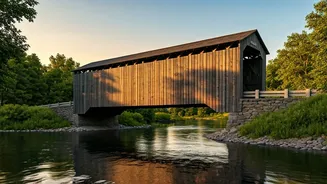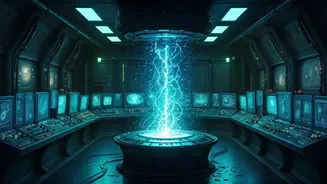Early Bridge Designs
The genesis of covered bridges can be traced back to the challenges faced by early bridge builders. Before advanced engineering practices and durable materials
were widely available, constructing bridges that could withstand the elements and heavy traffic presented a significant hurdle. Early bridges, often made of wood, were particularly susceptible to rapid decay, weathering, and damage from the elements like rain, snow, and sun exposure. These factors drastically reduced the lifespan of the structures, necessitating frequent and costly repairs or complete replacements. To combat these issues, builders looked for innovative solutions that would extend the life of their wooden bridges, and thus, the idea of covering them emerged as a practical solution to enhance longevity. This marked the beginning of a transformation in bridge construction, prioritizing preservation and longevity.
Reasons for Covering
The primary rationale behind covering bridges was to extend their lifespan, especially when constructed with wood. Wood, a readily available and relatively inexpensive material, was the primary building block for bridges. However, it was also vulnerable to the damaging effects of weather. Rain and snow could cause wood to rot, while sunlight could degrade its structural integrity. Furthermore, the wooden bridges were at risk from the wear and tear caused by traffic. By covering the bridge, builders shielded the wooden structure from these threats. The roof and siding acted as a protective barrier, preventing water from seeping into the wood and reducing its exposure to sunlight. This protection drastically increased the lifespan of the bridges, making them a more cost-effective option over the long term. Beyond the longevity aspect, covering the bridges also added to the safety of travelers, preventing ice and snow buildup on the roadway, thus minimizing the chance of accidents.
Protecting the Structure
The architectural design of covered bridges played a significant role in protecting the wooden structure from the elements. The roof was designed to shed water efficiently, diverting it away from the bridge's supporting components. The overhanging eaves further protected the sides of the bridge, preventing direct rain from reaching the walls and the main structural timbers. The covered design also helped to regulate the internal temperature of the bridge, reducing the stresses caused by the repeated freezing and thawing cycles. This was particularly beneficial in colder climates. In addition, the covering helped to prevent the formation of ice on the bridge deck, making it safer for travelers and reducing the risk of accidents. The combination of the roof, the siding, and the overall design helped to create a sheltered environment that significantly extended the life of the wooden bridge.
Evolution of Bridges
As engineering and construction techniques advanced, the ways of building bridges changed, leading to the gradual decline of covered bridges. The advent of new materials, such as steel and concrete, offered greater durability and the ability to span longer distances. Steel, in particular, was resistant to weather-related damage, and concrete allowed for the construction of bridges that could withstand heavier loads. These materials, combined with innovative engineering designs, created bridges that were more durable, efficient, and capable of handling increasing traffic demands. These new bridges also required less maintenance than their wooden predecessors. The shift towards steel and concrete marked a turning point in bridge design and construction, as it created a move away from the traditional covered bridge that had served communities for decades.
Modern Bridge Alternatives
Modern bridges are a testament to advancements in engineering and material science. Steel and concrete are the cornerstones of contemporary bridge construction. These materials provide exceptional strength, longevity, and versatility, enabling the construction of bridges of all shapes and sizes, from simple spans to complex cable-stayed and suspension structures. Furthermore, modern bridges are designed with advanced drainage systems, protective coatings, and ongoing maintenance programs, ensuring they can withstand the test of time and heavy use. Modern bridge designs also prioritize safety, with features such as guardrails, lane markings, and clear signage. These features improve the safety of drivers and pedestrians. As modern bridges evolved, they fulfilled the requirements for high traffic volumes and also improved the efficiency and safety of transportation infrastructure.









